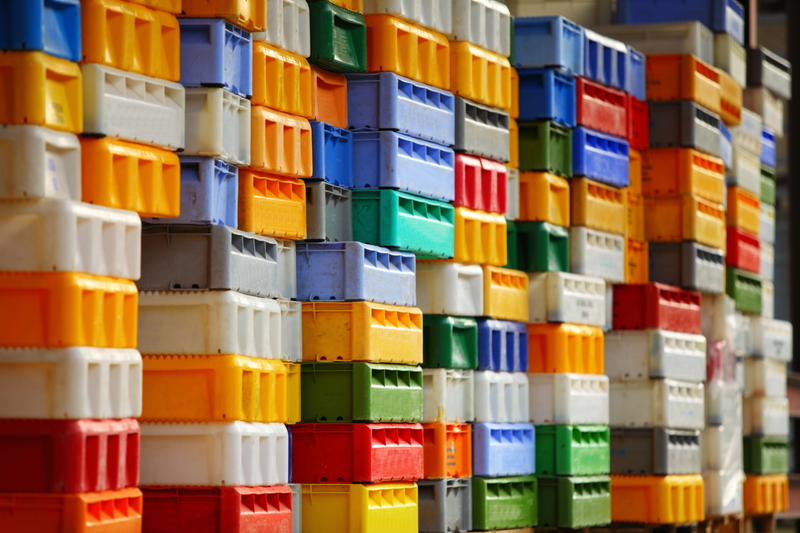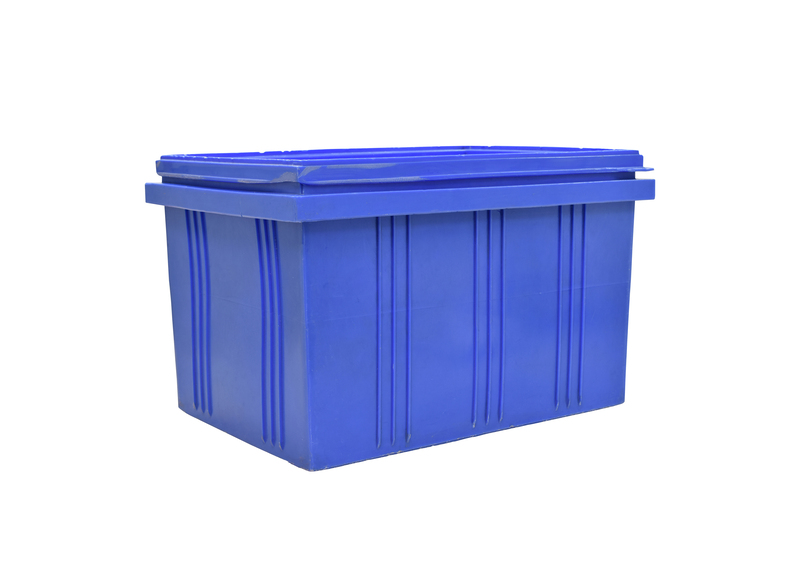Get Packing Right: Tips to Effortlessly Move House
Posted on 15/06/2025
Get Packing Right: Tips to Effortlessly Move House
Moving house is often a daunting prospect, filled with stress, logistical challenges, and seemingly endless to-do lists. But what if we told you there's a smarter and more efficient way to tackle packing and relocating? With the right strategies and a bit of preparation, you can move house effortlessly and efficiently. In this ultimate guide, we'll walk you through expert-backed tips and secrets to get your packing right so your move turns out smooth and stress-free.

Why Packing Properly Matters Before Moving House
Packing is more than just putting your stuff in boxes. Done right, it protects your valuables, saves you time, and cuts down on stress during moving day and when unpacking in your new home. If done poorly, it can lead to broken belongings, misplaced essentials, and unnecessary chaos. That's why following professional packing and moving tips is essential for anyone aiming to relocate without headaches.
Benefits of Smart Packing:
- Saves time and reduces stress
- Minimizes the risk of damage to your belongings
- Makes unpacking much easier
- Keeps your essentials accessible when you need them
- Reduces moving costs by optimizing space
Now, let's jump into the most effective methods and tips for getting your packing right for an easy house move.
1. Plan Ahead for a Seamless Move
Getting organized well in advance is crucial for a less stressful move. The earlier you start, the smoother the packing--and unpacking--process will be.
Start Early
- Begin packing at least four weeks before moving day, especially for larger households or those with more possessions.
- Focus on items you rarely use first (e.g., seasonal clothes, decor, books, and extra linens).
- Leave daily essentials and high-use items until the last couple of days.
Create a Moving Checklist
- List key tasks such as gathering packing materials, sorting, labeling, and confirming moving dates.
- Include administrative details: updating your address, redirecting mail, and notifying services/utilities.
Declutter Before You Pack
- Sort through rooms and closets, deciding what to keep, donate, sell, or discard.
- Reduces the amount of packing and saves you time and space in your new home.
Pro tip: The less you bring, the less you have to pack, move, and unpack!
2. Gather the Right Packing Supplies
Before you begin, make sure you have the right packing materials on hand. Using quality supplies is vital for keeping your belongings safe during transit.
- Sturdy cardboard boxes in varying sizes
- Packing tape for reinforced sealing
- Bubble wrap or packing paper for wrapping fragile items
- Moving blankets or towels for larger, delicate furniture or appliances
- Permanent markers and labels for clear identification
- Scissors, box cutters, and zip ties
- Plastic bins for items needing extra protection or for temporary storage
Don't underestimate the importance of high-quality materials: Flimsy boxes or cheap tape can lead to broken belongings and bigger headaches down the line.
3. Pack Room by Room for Ultimate Organization
Packing room by room keeps the process manageable and ensures boxes are logically organized for easier unpacking in your new house.
Effective Room Packing Tips:
- Designate each box with a room name (e.g., "Kitchen", "Master Bedroom") and a short contents summary.
- Use different colored markers, labels, or stickers for each room to quickly identify boxes at a glance.
- Wrap fragile items separately and label as "Fragile."
- Keep parts, screws, and instructions for furniture or electronics in labeled bags taped to larger items.
Bonus tip: Pack an "Essentials Box" for each person in your household with things you'll need for the first night.
4. Use Space Wisely: Packing Hacks and Techniques
Smart use of space is a gamechanger for easy packing and minimizing the number of boxes needed for your move.
Top Space-Saving Packing Tips:
- Fill suitcase and drawers: Transport clothes, linens, or non-breakables inside suitcases, dressers or storage bins.
- Nest smaller items: Place smaller belongings inside or alongside larger items where safe and appropriate.
- Utilize soft items as padding: Wrap glasses in dish towels or sweaters to cut down on bubble wrap usage.
- Keep weight balanced: Don't overload boxes. Heavier items at the bottom, lighter ones on top.
- Disassemble what you can: Breakdown furniture and large electronics to save space and protect from damage.
5. Master the Art of Labeling Boxes
Clear labeling isn't just about knowing what's inside each box--it's your roadmap for a smooth move and unpack later.
Best Practices for Labeling:
- Always label the top and sides of the box for easy visibility, both when stacked and from above.
- Use large, bold handwriting or printed shipping labels.
- List contents, room, and if it's fragile/needs special handling.
- Add a priority indicator: "Unpack First" for essentials, or "Last Load" for storage items.
Avoid cardboard surprises! Thorough labeling is a time-saving investment you'll thank yourself for on move-in day.
6. Protect Fragile and Valuable Items
Proper protection of breakables is key to ensuring your items arrive intact. Here's how to pack fragile items for a house move:
- Wrap items individually: Use bubble wrap, packing paper, or towels for glassware, ceramics, and electronics.
- Avoid empty spaces in boxes to prevent items shifting. Fill gaps with soft items or crumpled paper.
- Pack plates and glassware vertically as they're more resistant to pressure that way.
- Use specialized boxes for electronics, mirrors, or artwork: TV/mirror boxes or reinforced crates.
- Clearly label boxes as "Fragile" and indicate which side is up.
If you have high-value belongings, consider extra insurance or using a professional moving company experienced in specialty packing.
7. Tackle Large Furniture and Appliances
Bulky items present unique challenges when moving house. Proper disassembly and protection strategies will prevent dings, scratches, and headaches.
- Disassemble furniture: Remove legs, shelves, and cords where possible. Store screws and fasteners in labeled bags taped to the item.
- Protect corners and surfaces with blankets, foam pads, or bubble wrap.
- Secure doors and drawers shut with stretch wrap or straps.
- Drain appliances and disconnect water/electric lines in advance. Check the manufacturer's guide for moving protocols.
- Use sliders or dollies to prevent floor damage and ease transportation.
8. Pack an "Open First" Essentials Box
Imagine arriving at your new house exhausted--only to find yourself rummaging through dozens of boxes for your toothbrush, nightwear, or kettle. Avoid this frustration by preparing one or two "Open First" boxes containing items you'll need immediately in your new home.
- Toiletries, towels, and bedsheets
- Basic kitchen items: coffee maker, instant food, cutlery, and plates
- Chargers, devices, and extension cords
- Medications and a basic first aid kit
- Important documents and keys
- Children's or pets' essentials, if applicable
Mark these boxes clearly and set them aside on moving day--they're your lifeline during your first night in your new place!
9. Enlist Professional Help If Needed
If all this feels overwhelming, or you're short on time, consider hiring a professional moving service. With expert packers and tested systems, many removals companies can handle everything from careful packing to transporting your belongings--giving you peace of mind.
- Research reputable movers and check online reviews.
- Get quotes and clarify what's included (packing, loading, transport, insurance, unpacking).
- Ask about special handling for high-value or fragile items.
Using professionals can cost more, but the convenience and safety often outweigh the expense--especially for long-distance or complex moves.
10. Common Packing Mistakes to Avoid
Even people with the best intentions can make mistakes when moving house. Here's what to steer clear of:
- *Leaving packing to the last minute* resulting in panic and disorganization
- *Skipping labels* or failing to record box contents by room
- *Overfilling boxes*, making them hard to lift or at risk of breaking
- *Forgetting to pack an essentials box* for the first night
- *Not protecting fragile items properly* and ending up with avoidable breakages
- *Ignoring weight distribution*, which can cause boxes to break or injure movers

Bonus Tips: Moving Day and Unpacking Made Easy
- Start early on moving day to maximize daylight and energy levels.
- Carry valuables and important documents yourself instead of loading them onto the moving van.
- Unpack essentials first for a smoother transition.
- Flatten boxes and recycle packing materials as you go to keep your new home tidy.
- Update your address everywhere (bank, subscriptions, friends, etc.).
Remember, an organized move means you'll be able to settle in and enjoy your new home faster!
Conclusion: Effortlessly Move House With Smart Packing
Relocating to a new home doesn't have to be stressful or overwhelming. By getting packing right and following the expert tips for moving house in this guide, you'll find the process more manageable, efficient, and--dare we say--enjoyable! Start early, get organized, and remember: every minute spent planning and packing smartly is time saved when unpacking and settling in.
Happy moving--and welcome home!



